Popular Alexandria Bay Shipwreck, Islander Documented Using State of the Art Technology.
On February 4, 2022, Khris and Dana Hunt, from Hunt's Dive Shop in Clayton, NY, set up a tent on the ice covering the St. Lawrence. Though the tent looked similar to the many other ice fishing tents used by fishermen every February, the Hunts were on a different mission. They were setting up a base of operations to survey and record a shipwreck, the Islander. The goal of the project was to produce a high-resolution video of the wreck site which could be processed into a 3D image.
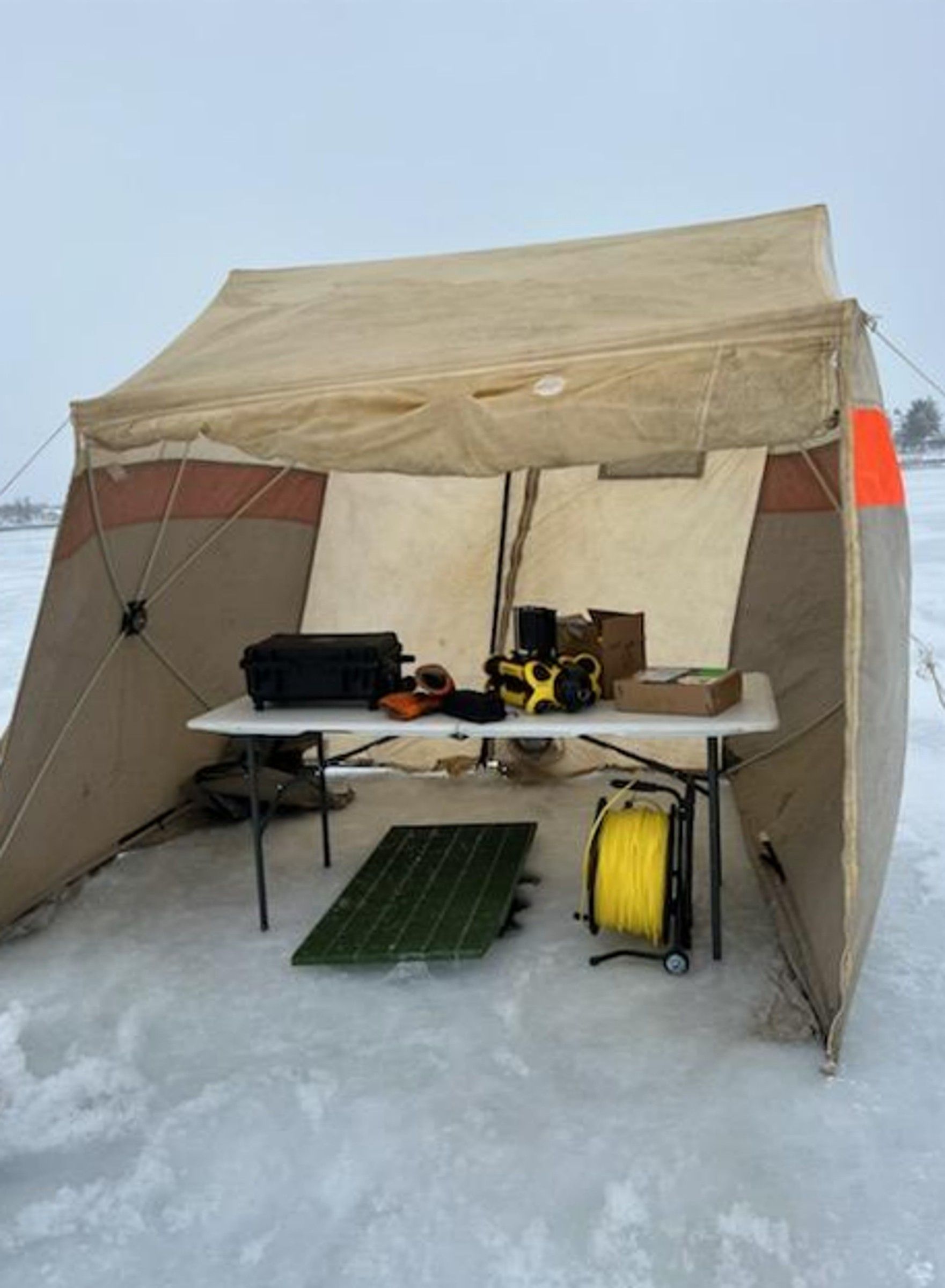
The Islander shipwreck is a well-known dive site off the Cornwall Brothers Store Museum, which stands at the foot of Market Street in downtown Alexandria Bay, N.Y. In 1871, the side-wheel steamer which would become the Islander was built at Rochester, N.Y. She originally launched as the James H. Kelly. Later she was renamed the John Thorn before receiving her third and final name, the Islander. The Islander measured 125 feet by 20 feet by 7 feet and weighed 118 gross tons. As well as being a regular mail carrier between Clayton and Alexandria Bay, she was used as a tour boat in island and river tours. The Islander burnt on September 16th, 1909, while at dock in Alexandria Bay.
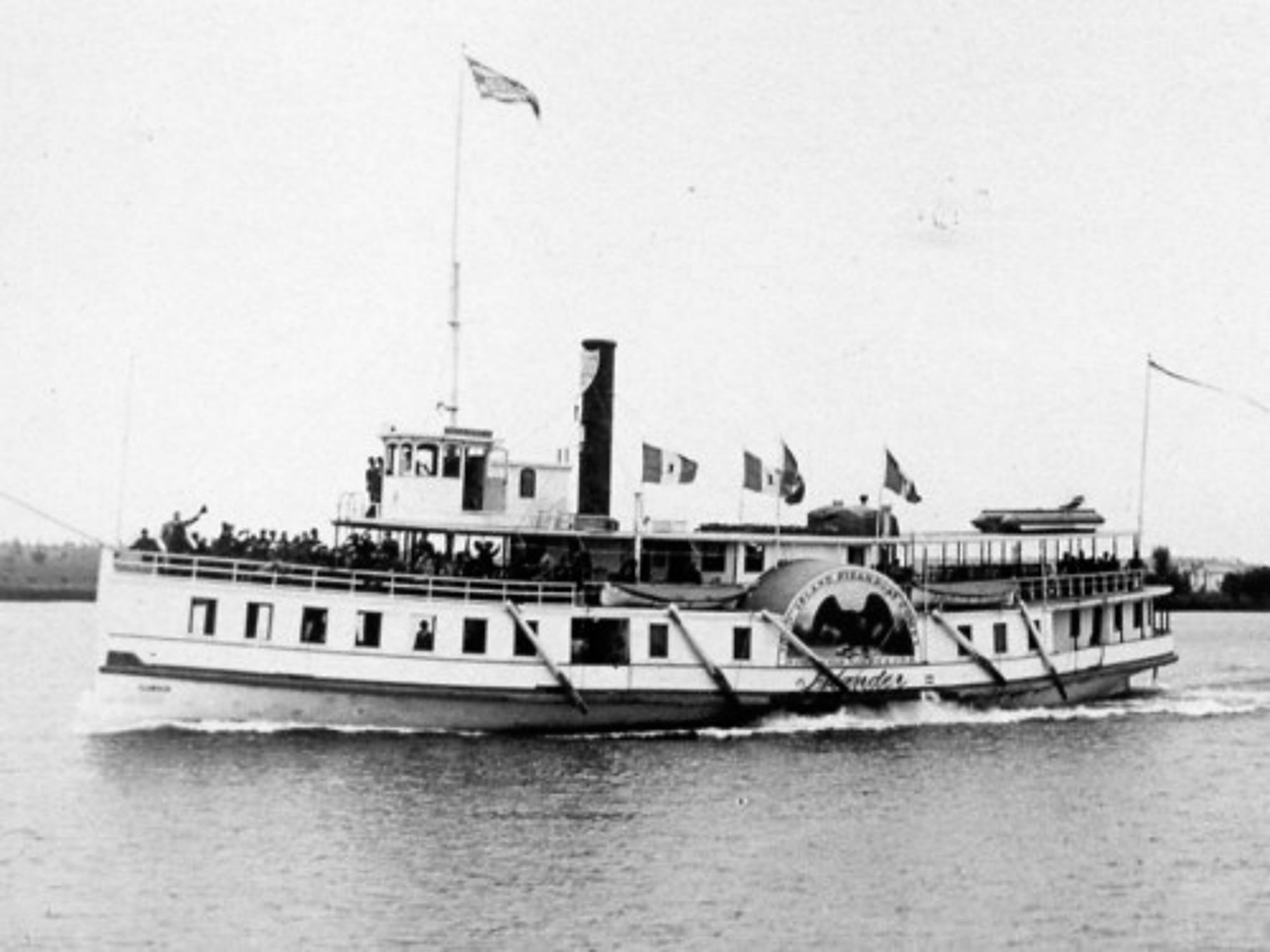
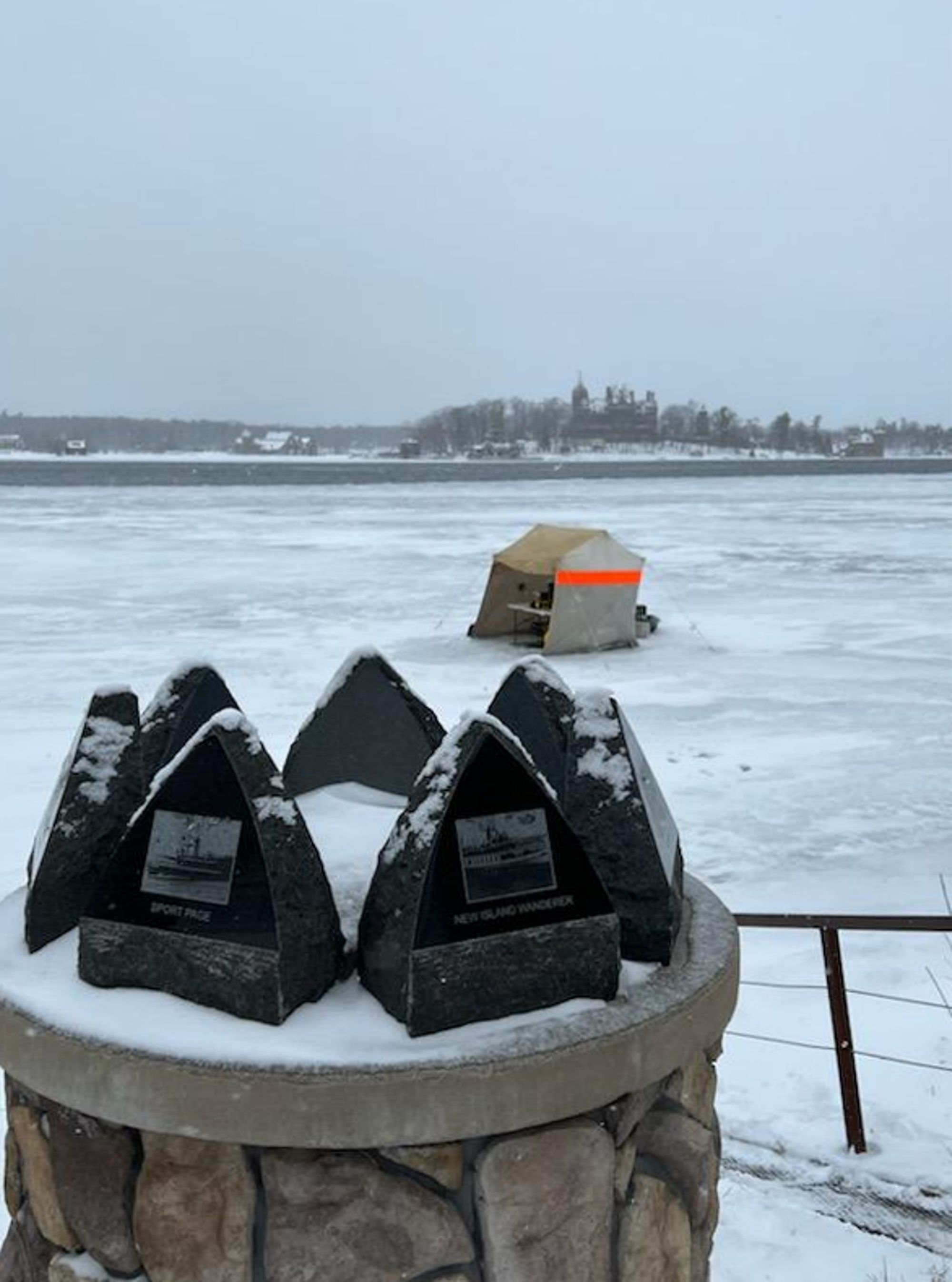
Today, the remains of the vessel are much deteriorated. The wreck is nearly parallel with the shore, resting on the slope of the bottom at about 30 to 45 feet deep, with some timbers as deep as 60 feet. Divers seeking to explore the shipwreck in warmer seasons can find it with help from the signage, car parking, and water access maintained by the village. The wreck even has its own Facebook page: “The Islander, Alexandria Bay, NY” with 297 members. This page is dedicated to the use and maintenance of the Islander dive site. The site administrators invite instructors and other divers to post their plans for accessing the site, allowing others to know who is doing what and when.
While most of the action at the Islander occurs in the summer, Khris and Dana chose winter for a reason. Underwater clarity of the St. Lawrence River is the clearest when the water is at its coldest. This optimal water clarity typically occurs in February when the river is frozen. However, diving under the ice can be dangerous. It is difficult to work in near-freezing temperatures.
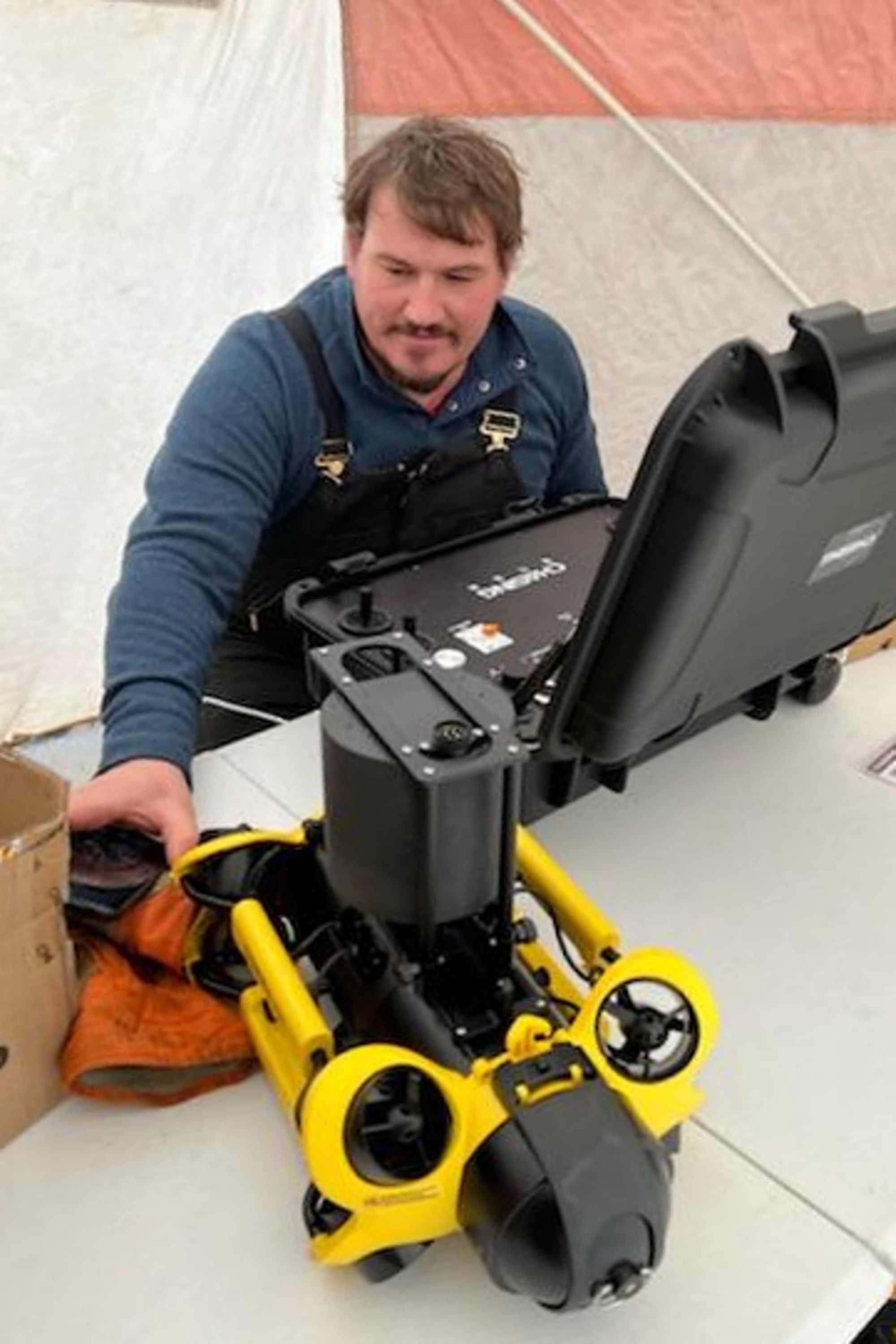
Only experienced divers such as the Hunts should attempt such a mission. To stay even safer, Khris and Dana used technology to address the challenges of winter diving. Dana was able to produce an underwater video while sitting in his dry tent protected from the cold wind. He recorded the footage by piloting a state-of-the-art Remotely Operated Vehicle (ROV). A ROV is a submersible waterproof drone.
After recording, the Hunts gave the video to the St. Lawrence River Historical Foundation (SRHF). SRHF produced the desired 3D image using a process called Photogrammetry. This process takes the thousands of images captured by a video and analyzes them in order to map out the targeted object in three-dimensional space. The 3D model produced is essentially a mathematical representation of the shipwreck. SRHF made the model available online and now the public can experience the visual 3D reconstruction of the Islander at https://www.ti3ds.com/p/islander.html . Models such as this are allowing people to view and explore shipwrecks from anywhere in the world that has internet access.
The Islander project is only one example of the exciting applications of new underwater technology. Advancements in low cost underwater mapping and survey technology are allowing shipwreck hunters to explore and make discoveries in deeper waters. The technologies include low-cost Global Positioning Systems (GPS), side scan sonar, and ROVs. Not limited to shipwreck researchers, these technologies are now appearing in other watercraft such as Bass Boats. Bass Boats may have more electronics on them than some research vessels had 10 years ago.
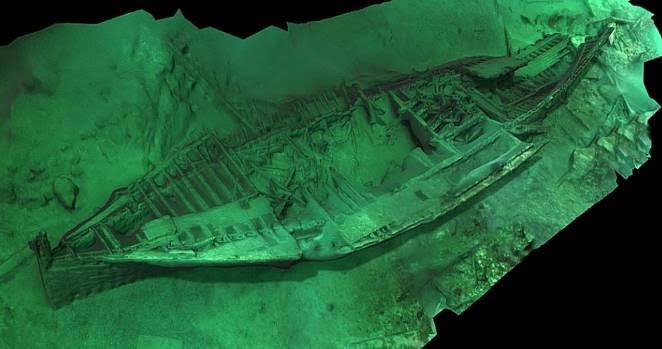
Contributions like the video done by Khris and Dana Hunt help in documenting the maritime history of the Thousand Islands as well as all the Great Lakes area. SRHF joined and is working with https://3dshipwrecks.org/ as part of their mission "to create a database of 3D models of all Great Lakes shipwrecks that can be viewed by the public and professionals to study and enjoy these historical maritime sites in the region. The public can visit these sites from the comfort of their homes and appreciate the wealth of our maritime heritage preserved in the waters of our Great Lakes. Academics and professional resource managers will be able to quickly investigate these sites to evaluate the potential historic significance of features of the sites.”
Note: Like any technology driven activity, Shipwreck explorers are just ramping up for deeper and more discoveries. From canal boats in the Finger Lakes, to Lake Ontario and the Upper St. Lawrence, local shipwrecks can be seen at the following sites:
• Thousand Islands 3D Shipwrecks http://www.ti3ds.com/
• Sonar Guys https://sonarguy.com/
• Shipwreck World https://www.shipwreckworld.com/
By Dennis McCarthy
Dennis R. McCarthy lives in Cape Vincent, NY, along with his wife Kathi. He is a graduate of the Rochester Institute of Technology, with a degree in Electrical Engineering. A certified scuba diver for over 50 years, he made his first dive in 1971. He is a co-founder (1994) and current director of the St Lawrence Historical Foundation Inc. and a board member of The Fort La Présentation Association https://fort1749.org. A past president of the Clayton Diving Club and Dennis and Kathi are past members of the Advisory Council for the Proposed NOAA Lake Ontario Sanctuary.
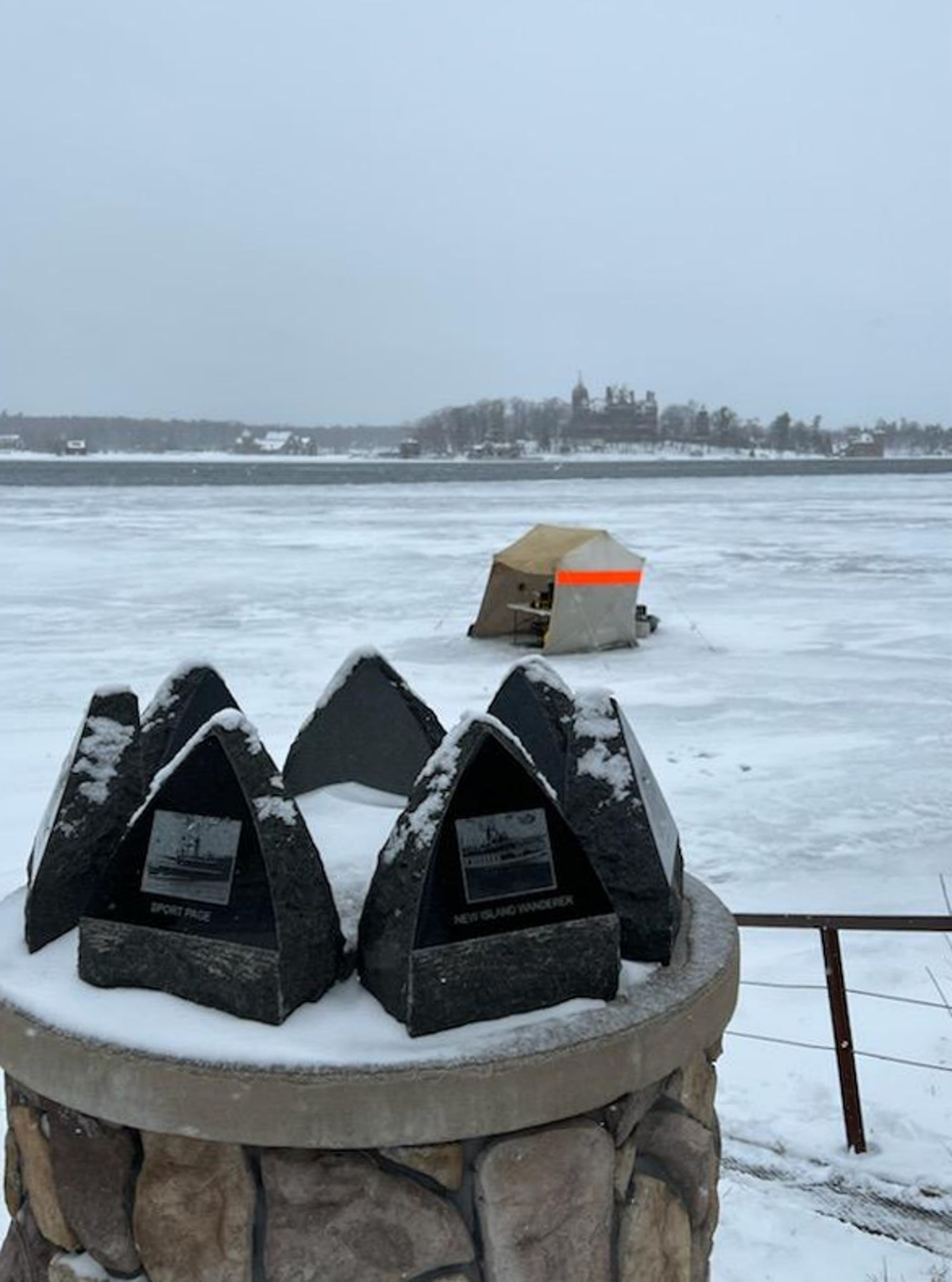
Posted in: Volume 17, Issue 3, March 2022, History, Sports
Please click here if you are unable to post your comment.
